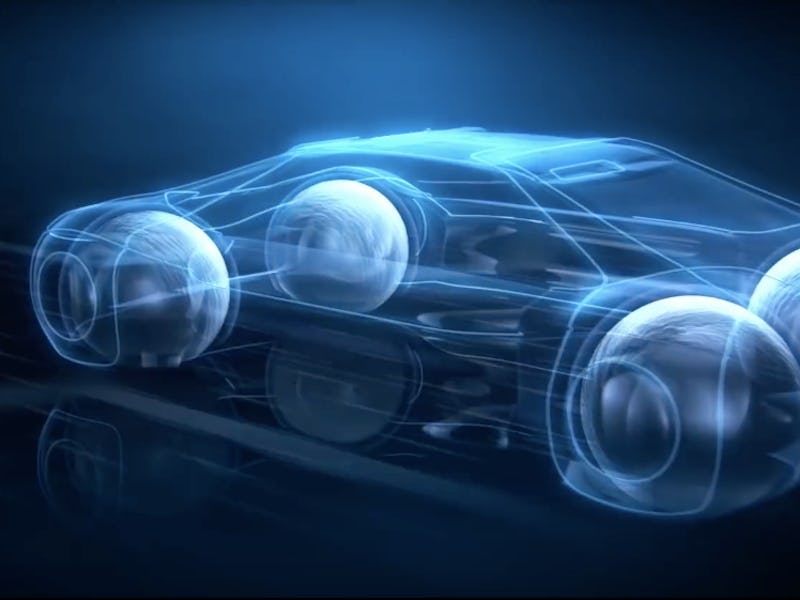Why Will Goodyear's Spherical Tires Only Work With Driverless Cars?
Put simply: There's a lot that goes into the tires of the future.

When Goodyear debuted its Eagle-360 spherical tire concept on March 1, imaginations understandably went wild. Goodyear’s press release promised a future where autonomous cars magnetically levitate over magic-tread tires that can react to any weather or road condition, making the cars of the future safer than any that we see today.
Which draws the question: Why can’t we have these glorious, life-saving tires on human-controlled vehicles?
Theoretically, the technology for attaching these tires to existing vehicles exists, just not in a usable form. Students working on a project called the Spherical Drive System at San Jose State University came up with a spherical-wheeled motorcycle that was functional all the way back in 2012. Even though that vehicle never surpassed 10 mph, it was an example of how future vehicles might work.
The most obvious problem that the Eagle-360 and other tires like it will pose to humans is the sheer amount of information they promise to deliver.
The Eagle-360 prototype.
“By steadily reducing the driver interaction and intervention in self-driving vehicles, tires will play an even more important role as the primary link to the road,” Goodyear’s senior vice president and chief technical officer Joseph Zekoski said in the press release.
In other words: The tires of the future will be doing a lot more than simply keeping your car on the ground.
The Eagle-360 will be able to monitor weather and road conditions, analyze traffic data, keep track of the tread and tire pressure level, and even be able to rotate itself to extend the life of the tire. Drivers are already too distracted with their phones to pay attention to any of that data, let alone use the data to make on-the-fly decisions while driving.
Additionally, the tires will entirely change the way cars move. The rotating wheels will be able to move independently of each other, something that designers hope will give cars more control in tricky operating conditions. Yet that much control would be overwhelming for the average driver. It’s much easier (and faster) for A.I. technology to take in all of the information sent through the tire, translate that data, and then make the best decision based on all the factors.
Keep in mind that the average driver’s reaction time is .75 seconds. That might sound fast, but it only equates to around one car length for every 10 mph.
And the tires operating independently from each other is important, because it presumably will keep the car from doing wild things like this:
Finally, even if humans were able to process everything and decide which way the independent tires should move, learning to navigate a control system would be like learning to operate a rocket ship. The San Jose students put it this way: the controls for a vehicle with spherical wheels would need to “take sensor readings from a gyro-accelerometer combo, and determine an appropriate response based on the input from the user as well as maintaining stability.” It would balance “an inherently unstable system,” collaborate with all of the independent drive motors, as well as take the readings and make it something understandable and usable.
A.I. is far from being as smart as humans, but there are just some things that computers do best. Operating a vehicle atop spherical wheels is one of them.